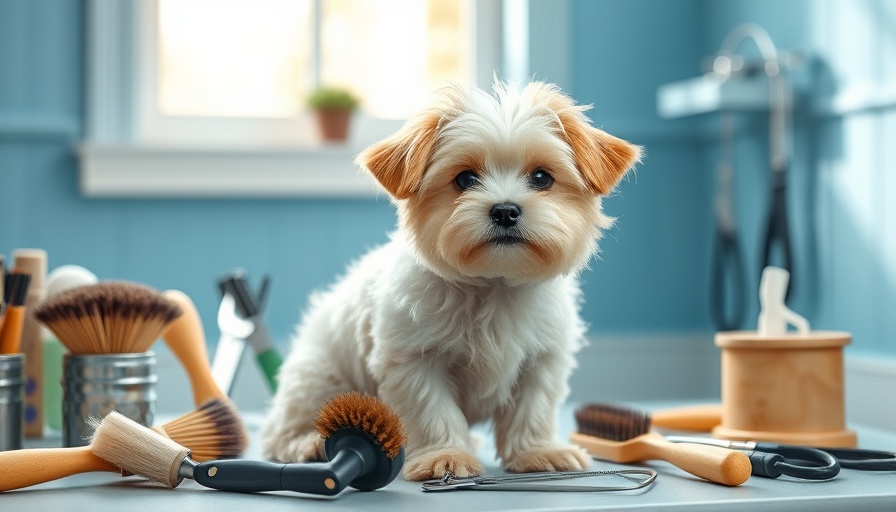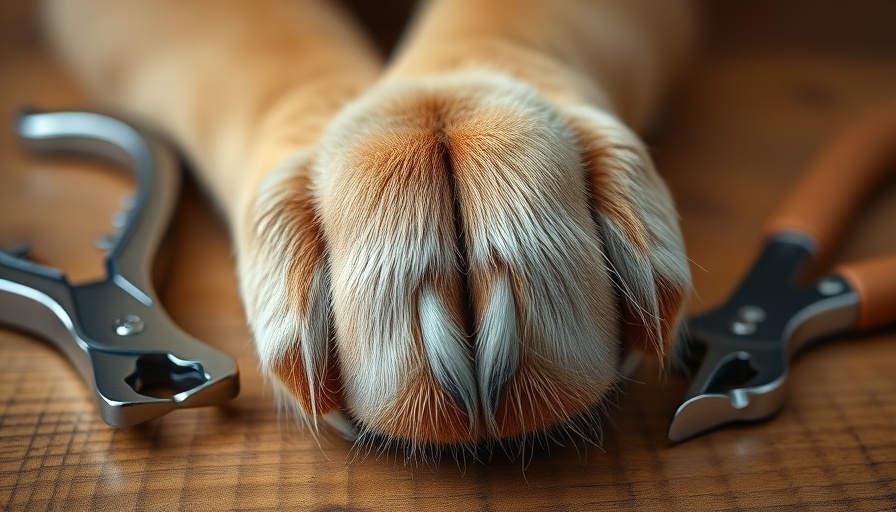
The Shedding Mystery: Why Dogs Moult
Moulting can often feel like a shedding season for both dogs and their owners. Each year, as the weather changes, your furry friend goes through a natural process of fur renewal. This shedding is crucial for your dog's health, serving both to regulate body temperature and to keep their coat in optimal condition. Understanding this cycle can help pet owners manage the accompanying fur and stress.
During spring months, for instance, dogs will shed their winter coats to prepare for warmer weather. Similarly, in the fall, this process flips as they prepare for winter by growing thicker fur. However, if you have an indoor dog, be prepared for year-round shedding. The controlled temperatures and artificial lighting affect their natural rhythm, prompting them to shed more often than they would outside.
Tailored Grooming: Strategies for Different Breeds
Just like people have varied hair types, dogs also have their unique shedding patterns based on breed. Double-coated breeds such as Huskies and German Shepherds are notorious for their heavy shed in the seasonal transitions, while single-coated breeds like Poodles and Maltese shed less but frequently require grooming to prevent matting. Knowing your dog’s breed will guide your grooming regimen, helping to reduce stress for both the dog and owner. Regular grooming sessions can make a world of difference, especially during peak shedding seasons.
Diet: Nourishment for a Healthy Coat
A crucial yet often overlooked aspect in managing a moulting dog is diet. A balanced diet rich in high-quality proteins and omega-3 fatty acids promotes a healthy coat, which can minimize shedding. Foods with added nutrients specifically geared towards coat health can provide dogs with what they need to maintain a beautiful, shiny fur coat even during moulting seasons. Consulting with a veterinarian can help identify the best diet tailored to your dog's needs.
Stress and Shedding: Create a Soothing Environment
Beyond grooming and nutrition, managing stress levels can significantly reduce shedding in dogs. Various life changes, new environments, and changes in routine can trigger a shedding response. Ensuring a calm, consistent environment is pivotal. Routine is your greatest ally! Establishing set times for walks, meals, and playtime can mitigate anxiety in your fellow canine. Remember: A happy dog equals less shedding!
Health Check: When to See the Vet
While shedding is typically a natural process, abrupt or excessive hair loss can indicate underlying health issues such as skin allergies or hormonal imbalances. Being vigilant and consulting with a veterinarian about sudden changes in your dog’s shedding pattern is essential. Identifying and addressing any potential health problems promptly can save your pup from discomfort and keep those shedding episodes at bay.
Lifespan and Shedding: Understanding the Transition
Age plays its role, too! Puppies and senior dogs often experience different shedding patterns than their adult counterparts. Puppies can go through intense shedding phases as they transition from baby fur to adult coats, and older dogs might shed more as they age due to hormonal changes. Monitoring these generational shifts can prepare you and help you adapt your care routine.
In essence, managing a moulting dog doesn't have to be an overwhelming task. By understanding the mechanics behind shedding, fostering a nurturing environment, and maintaining a consistent grooming routine paired with proper nutrition, your home can stay cleaner, and your pup more comfortable. Remember, a little effort can lead to a happier, healthier dog!
Conclusion: Shed the Worry!
Don’t let moulting season keep you down! With the right strategies in place, you can embrace this time of change. So, grab that grooming brush, start implementing a well-rounded diet, and ensure your dog's stress is minimized. Your dog will thank you for it!
 Add Row
Add Row  Add
Add 




Write A Comment